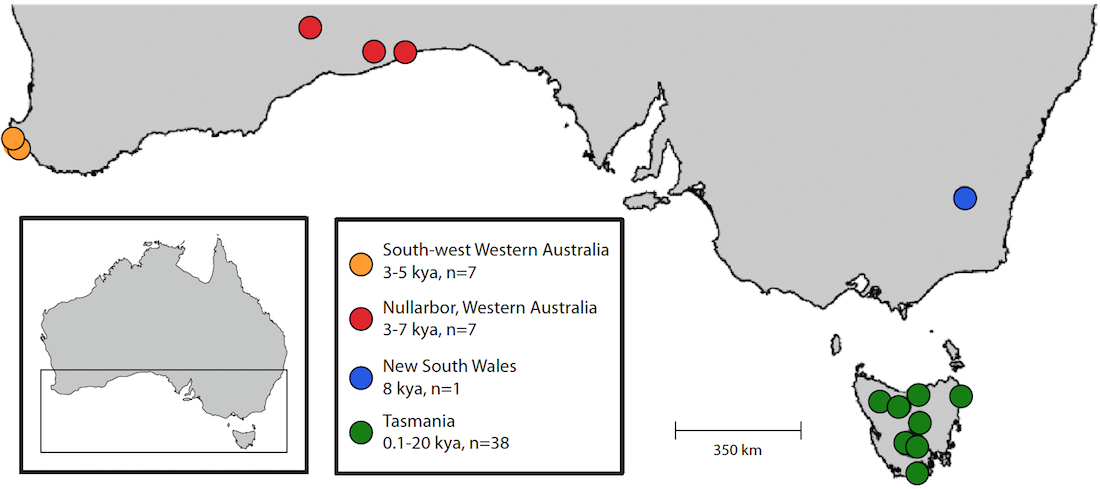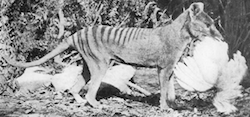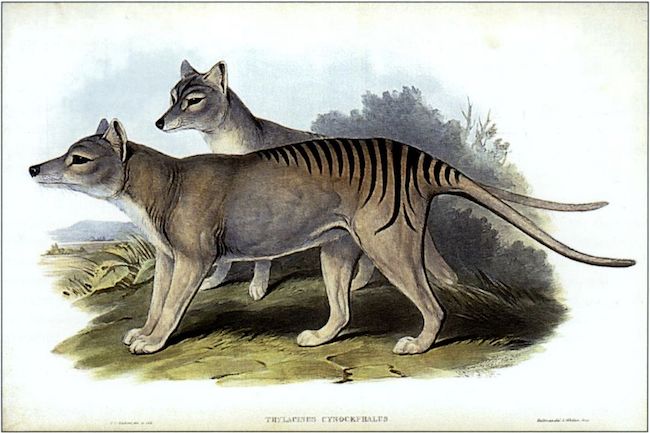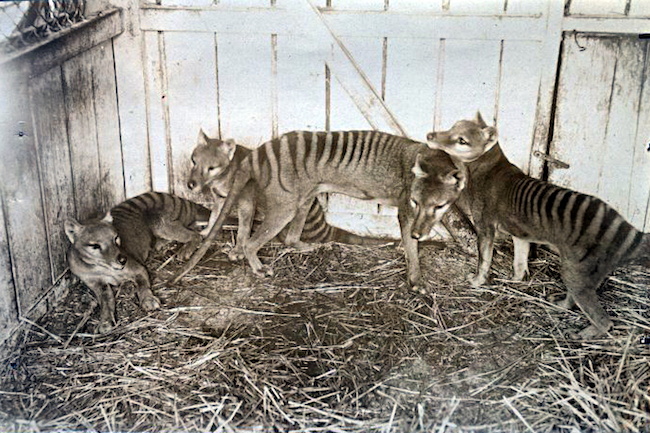Thylacine
People have tended to resent competition from other species, especially from large carnivores who also wish to eat domesticated animals or wild animals designated as game. For this reason, many late nineteenth-century conservation programs included bounties on animals like lions and wolves at the same time that they instituted limitations on the killing of herbivores like giraffes and bison. (Current ecological understandings were not integrated into wildlife management until well into the twentieth century.) At least in recent millennia, marsupial carnivores have been less challenging—or at least smaller--than placental ones, but they have nevertheless inspired similar responses.

After the extinction of the marsupial lion (Thylacoleo carnifex) approximately 45,000-50,000 years ago, following the arrival of the first human settlers, the thylacine, which was the size of a medium to large dog, was the largest Australian carnivore. Its historic range had extended across New Guinea and mainland Australia, but by the time that European settlement began in the late eighteenth century, the island of Tasmania was their only home.  The spread of European settlement, and especially of European farming practices, meant that like carnivores elsewhere in the world, they were blamed for killing poultry and sheep. Official bounties were offered as early as the 1830s and continued into the early twentieth century, when the thylacines had already become very rare. As is usually the case, the extent of their depredations on livestock was probably exaggerated; for example, a thylacine apparently in the act of stealing a chicken, who featured in a widely republished photograph, is now acknowledged to have been taxidermied. They also performed some of the same iconic functions as did lions, tigers, and eagles elsewhere; for example, two thylacines support the Tasmanian shield on the coat of arms granted by George V in 1917.
The spread of European settlement, and especially of European farming practices, meant that like carnivores elsewhere in the world, they were blamed for killing poultry and sheep. Official bounties were offered as early as the 1830s and continued into the early twentieth century, when the thylacines had already become very rare. As is usually the case, the extent of their depredations on livestock was probably exaggerated; for example, a thylacine apparently in the act of stealing a chicken, who featured in a widely republished photograph, is now acknowledged to have been taxidermied. They also performed some of the same iconic functions as did lions, tigers, and eagles elsewhere; for example, two thylacines support the Tasmanian shield on the coat of arms granted by George V in 1917.
 |
 |
The last thylacine died in the Hobart Zoo in 1936, a few months after the species received official protection (or at least the last authenticated specimen—enthusiasts continue to report unverifiable sightings, both in Tasmania and on the Australian mainland). Once the thylacines were gone, they became the object of nostalgia and longing. The state cricket team is called the Tasmanian Tigers, and for a fee the Tasmanian government will sell motorists a license plate adorned with thylacines. The sequencing of the thylacine genome in 2017 even sparked talk of possible thylacine resurrection, although the closest living relative--the numbat, which is small, insectivorous, and endangered—is not very close at all.
| « Dodo | Tiger » |
